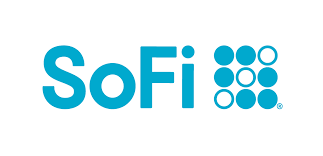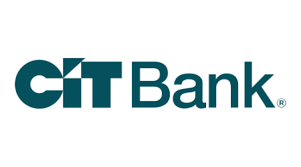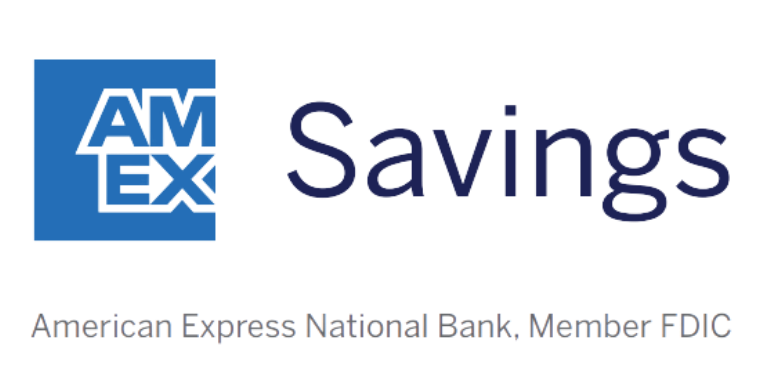Ever wondered why you can't make as many withdrawals as you want from your savings account? It's because of a federal regulation called Regulation D which limits the number of transfers and withdrawals you can make each month.
One of the big differences between an account designed for saving and a checking account is you have less flexibility in how you access your money. For example, a certificate of deposit (CD) or a money market account (MMA) will likely pay a higher rate of interest than a checking account. But Regulation D means those higher returns often come at the cost of convenience.
In the case of a CD, you'll need to commit to leaving your money alone for a set term. With savings accounts and MMAs, Regulation D normally limits you to six "convenient" transactions a month. Not to be confused with the SEC's securities-related Regulation D, this was introduced by the Federal Reserve to control spending from savings accounts. Let's take a deeper dive into exactly what is Regulation D.
Understanding Regulation D
To really understand what Regulation D is, we first need to know a bit about the Federal Reserve and the U.S. banking system. The Fed has existed for over 100 years with a mission to keep America's economy and financial system as stable as possible.
One aspect of this is making sure financial institutions have enough money on hand to keep the economy moving. When you deposit money with the bank, your cash doesn't just sit there waiting for you to take it out again -- the bank or credit union puts it to use, for example by loaning it out. That's one way financial institutions make money, which they can then use to pay interest on your savings deposit.
But what would happen if lots of people tried to withdraw their money at once? The banks wouldn't be able to pay. And it would quickly get out of hand -- if word got around that people couldn't withdraw their money, there'd be hordes of people at the doors of every financial institution clamoring for their funds.
That's called a "run on banks," and it's exactly the type of thing the Federal Reserve wants to prevent. One of the ways it does this is to require that banks keep a certain amount of money in reserve. And it helps banks to maintain those reserves by limiting the number of savings withdrawals customers can make. Regulation D basically makes it difficult for that angry mob to instantly withdraw all their savings.
Limiting Regulation D transactions won't stop you from accessing your money, but it will make it more inconvenient. It's a bit like the difference between shopping on a website where you've already saved your card details, and physically going to a store and standing in a long queue. You might still do the latter, but you're likely to do it less because it will take more effort.
Compare savings rates
Make sure you're getting the best account for you by comparing savings rates and promotions. Here are some of our favorite high-yield savings accounts to consider.
| Account | APY | Promotion | Next Steps |
|---|---|---|---|

Open Account for SoFi Checking and Savings
On SoFi's Secure Website.
Rating image, 4.50 out of 5 stars.
4.50/5
Our ratings are based on a 5 star scale.
5 stars equals Best.
4 stars equals Excellent.
3 stars equals Good.
2 stars equals Fair.
1 star equals Poor.
We want your money to work harder for you. Which is why our ratings are biased toward offers that deliver versatility while cutting out-of-pocket costs.
|
up to 3.80%²
Rate info
You can earn the maximum APY by having Direct Deposit (no minimum amount required) or by making $5,000 or more in Qualifying Deposits every 30 days. See SoFi Checking and Savings rate sheet at: https://www.sofi.com/legal/banking-rate-sheet.
Min. to earn: $0
|
New customers can earn up to a $300 bonus with qualifying direct deposits!¹
|
Open Account for SoFi Checking and Savings
On SoFi's Secure Website. |

Open Account for CIT Platinum Savings
On CIT's Secure Website.
Rating image, 4.50 out of 5 stars.
4.50/5
Our ratings are based on a 5 star scale.
5 stars equals Best.
4 stars equals Excellent.
3 stars equals Good.
2 stars equals Fair.
1 star equals Poor.
We want your money to work harder for you. Which is why our ratings are biased toward offers that deliver versatility while cutting out-of-pocket costs.
|
4.10% APY for balances of $5,000 or more
Rate info
4.10% APY for balances of $5,000 or more; otherwise, 0.25% APY
Min. to earn: $100 to open account, $5,000+ for max APY
|
Earn a bonus of at least $225 after a one-time deposit of $25,000+.
Transfer a one-time deposit of $25,000-$49,999.99 for a bonus of $225. Transfer a one-time deposit of $50,000+ for a bonus of $300. Account must be opened with code PS2025 while this promotion lasts, and funded within 30 days. Bonus will be fulfilled within 60 days from the funding date. There is no period of time where the customer will be required to maintain the funds. Account must be open when bonus is credited. One bonus per account and primary customer. Bonus will be credited into the Platinum Savings Account that fulfills the funding requirement. Funding can be deposited all at once or incrementally.
|
Open Account for CIT Platinum Savings
On CIT's Secure Website. |

Open Account for American Express® High Yield Savings
On American Express's Secure Website.
Rating image, 4.00 out of 5 stars.
4.00/5
Our ratings are based on a 5 star scale.
5 stars equals Best.
4 stars equals Excellent.
3 stars equals Good.
2 stars equals Fair.
1 star equals Poor.
We want your money to work harder for you. Which is why our ratings are biased toward offers that deliver versatility while cutting out-of-pocket costs.
|
3.70%
Rate info
3.70% annual percentage yield as of April 5, 2025. Terms apply.
Min. to earn: $0
|
N/A
|
Open Account for American Express® High Yield Savings
On American Express's Secure Website. |
SoFi disclosure:
¹ New and existing Checking and Savings members who have not previously enrolled in Direct Deposit with SoFi are eligible to earn a cash bonus of either $50 (with at least $1,000 total Direct Deposits received during the Direct Deposit Bonus Period) OR $300 (with at least $5,000 total Direct Deposits received during the Direct Deposit Bonus Period). Cash bonus will be based on the total amount of Direct Deposit. Direct Deposit Promotion begins on 12/7/2023 and will be available through 1/31/26. See full bonus and annual percentage yield (APY) terms at sofi.com/banking#1.
² SoFi members who enroll in SoFi Plus with Direct Deposit or by paying the SoFi Plus Subscription Fee every 30 days or with $5,000 or more in Qualifying Deposits during the 30-Day Evaluation Period can earn 3.80% annual percentage yield (APY) on savings balances (including Vaults) and 0.50% APY on checking balances. There is no minimum Direct Deposit amount required to qualify for the stated interest rate. Members without either SoFi Plus or Qualifying Deposits, during the 30-Day Evaluation Period will earn 1.00% APY on savings balances (including Vaults) and 0.50% APY on checking balances. Only SoFi Plus members are eligible for other SoFi Plus benefits. Interest rates are variable and subject to change at any time. These rates are current as of 1/24/25. There is no minimum balance requirement. Additional information can be found at http://www.sofi.com/legal/banking-rate-sheet. See the SoFi Plus Terms and Conditions at https://www.sofi.com/terms-of-use/#plus.
³ We do not charge any account, service or maintenance fees for SoFi Checking and Savings. We do charge a transaction fee to process each outgoing wire transfer. SoFi does not charge a fee for incoming wire transfers, however the sending bank may charge a fee. Our fee policy is subject to change at any time. See the SoFi Checking & Savings Fee Sheet for details at sofi.com/legal/banking-fees/.
⁴ SoFi Bank is a member FDIC and does not provide more than $250,000 of FDIC insurance per depositor per legal category of account ownership, as described in the FDIC’s regulations.
Any additional FDIC insurance is provided by the SoFi Insured Deposit Program. Deposits may be insured up to $3M through participation in the program. See full terms at SoFi.com/banking/fdic/sidpterms. See list of participating banks at SoFi.com/banking/fdic/participatingbanks.
⁵ We’ve partnered with Allpoint to provide you with ATM access at any of the 55,000+ ATMs within the Allpoint network. You will not be charged a fee when using an in-network ATM, however, third-party fees incurred when using out-of-network ATMs are not subject to reimbursement. SoFi’s ATM policies are subject to change at our discretion at any time.
⁶ Early access to direct deposit funds is based on the timing in which we receive notice of impending payment from the Federal Reserve, which is typically up to two days before the scheduled payment date, but may vary.
⁷ Overdraft Coverage is limited to $50 on debit card purchases only and is an account benefit available to customers with direct deposits of $1,000 or more during the current 30-day Evaluation Period as determined by SoFi Bank, N.A. The 30-Day Evaluation Period refers to the “Start Date” and “End Date” set forth on the APY Details page of your account, which comprises a period of 30 calendar days (the“30-Day Evaluation Period”). You can access the APY Details page at any time by logging into your SoFi account on the SoFi mobile app or SoFi website and selecting either (i) Banking > Savings > Current APY or (ii) Banking > Checking > Current APY. Members with a prior history of non-repayment of negative balances are ineligible for Overdraft Coverage.
What is a "convenient" transaction?
All of this begs the question, what is a "convenient" transaction? Well, Regulation D limits any easy way you can move money around, including:
- Automatic transfers, including overdraft payments
- Other convenient transfers such as a telephone transfer or electronic one
- Transactions made via online banking or mobile banking apps
- Payments by debit card or check
The penalties for making more than six transactions will differ from bank to bank. Some may charge you a per-transaction fee, and others might close your account or turn it into a checking account. And your savings account may not even offer some of these features, such as a debit card or check-writing capability. Either way, it makes sense to try to stay within the Regulation D limit.
What is an "inconvenient" transaction?
Regulation D does not restrict the number of "inconvenient" transactions you can make, although you should also check to see if your bank has specific rules for your account. Inconvenient transactions include:
- ATM transactions
- In-person transactions at the bank or credit union
- Calling the bank and having it mail a check
There are several ways you can avoid penalties for going over the Regulation D transaction limit. The simplest is to always use your checking account for your everyday banking. If necessary, make one larger transfer between your savings and checking account to cover your costs. Plan out how much money you might need each month, and organize your transfers accordingly.
If you've set up overdraft protection by linking your savings account to your checking account, be careful -- these automated transfers count as convenient transactions.
If you're pushing your transaction limit, visit the bank or ATM and make your withdrawal or transfer directly. Regulation D notwithstanding, it's good practice to avoid making lots of withdrawals from your savings account -- after all, the whole point is to use it for the money you want to save.
Regulation D and COVID-19
The novel coronavirus has changed many aspects of our lives, and the Regulation D rule is no different. On April 24, 2020, the Federal Reserve announced that it would temporarily suspend the six-transaction rule, effective immediately. Banks are now allowed, but not required, to lift transaction restrictions for savings accounts and MMAs. It's up to each bank or credit union to set its own rules. Check with yours before you make any additional withdrawals.
This is in part because people may need easier access to their savings right now. Plus, in these stay-at-home times, the Fed does not want to encourage people to go to banks or ATMs -- inconvenient transactions may actually be dangerous, not just a hassle.
The other reason is that the Fed has reduced the reserve ratio (the amount banks need to keep in their coffers) to zero. As discussed above, previously, banks needed to keep a percentage of their deposits in reserve, and Regulation D helped them to help them do so.
If you're worried that this means your money is less safe in the bank, don't panic. The bank reserves and Regulation D are only two of many protections. As a consumer, the biggest thing to watch for is FDIC insurance, which covers your account for up to $250,000 of losses if a bank collapses. It protects up to that amount per person, per financial institution, per type of account. So if you have more than $250,000 that you want to keep in accessible or short-term savings, you could divide it between different accounts (or even banks) for complete safety.
The interim suspension of Regulation D makes savings accounts and money market accounts even more appealing places to park your cash, but you should make sure it is the right option for you. If your bank has lifted the restrictions on withdrawals, you could get the benefit of the best savings accounts with some of the flexibility of a checking account, at least for now.
The Fed hasn't said how long the interim Reg D limit rules will be in place. As with many of the emergency COVID-19 measures, it's not a great idea to rely on them in the long term. If you find you often make more than six savings withdrawals per month, find out if there's a fee. And if there is, try to limit yourself to one or two big transfers rather than multiple smaller ones.
Many people are missing out on guaranteed returns as their money languishes in a big bank savings account earning next to no interest. Motley Fool Money's top savings account picks can earn you more than 10x the national average savings account rate.
We're firm believers in the Golden Rule, which is why editorial opinions are ours alone and have not been previously reviewed, approved, or endorsed by included advertisers. Motley Fool Money does not cover all offers on the market. Motley Fool Money is 100% owned and operated by The Motley Fool. Our knowledgeable team of personal finance editors and analysts are employed by The Motley Fool and held to the same set of publishing standards and editorial integrity while maintaining professional separation from the analysts and editors on other Motley Fool brands. Terms may apply to offers listed on this page. APYs are subject to change at any time without notice.